Returning in the summer of 1932 on a Norwegian sealing ship, Charles Peck got his first look at North America near Nain, a small village on the Labrador coast. The party decided to explore a fjord that ran inland for “perhaps 50 miles to the northwest.” In an Inuit village the men engaged native hunter Zack Elbow as their guide. Trout fishing held them at the head of the fjord for several days. Then Peck and his friend, Hoff Benjamin, conveyed to Elbow, who knew no English, that they wished to hunt caribou.
While the first day the trio saw a few small caribou, Peck declined the chance to kill them. “This seemed to irritate the Eskimo. However, by the next day I had [convinced] him that I was hunting for the ‘big Tuktu.’ So we proceeded overland [about] 12 miles, to a spot where Zack had shot a couple of bulls for meat during the previous winter.” At this place, Peck saw two caribou heads on the ground. Foxes had stripped them of flesh. The skulls were intact, however; the antlers seemed enormous. “We tossed a coin to see whether Benjamin or I would [take] the larger head. I won.”
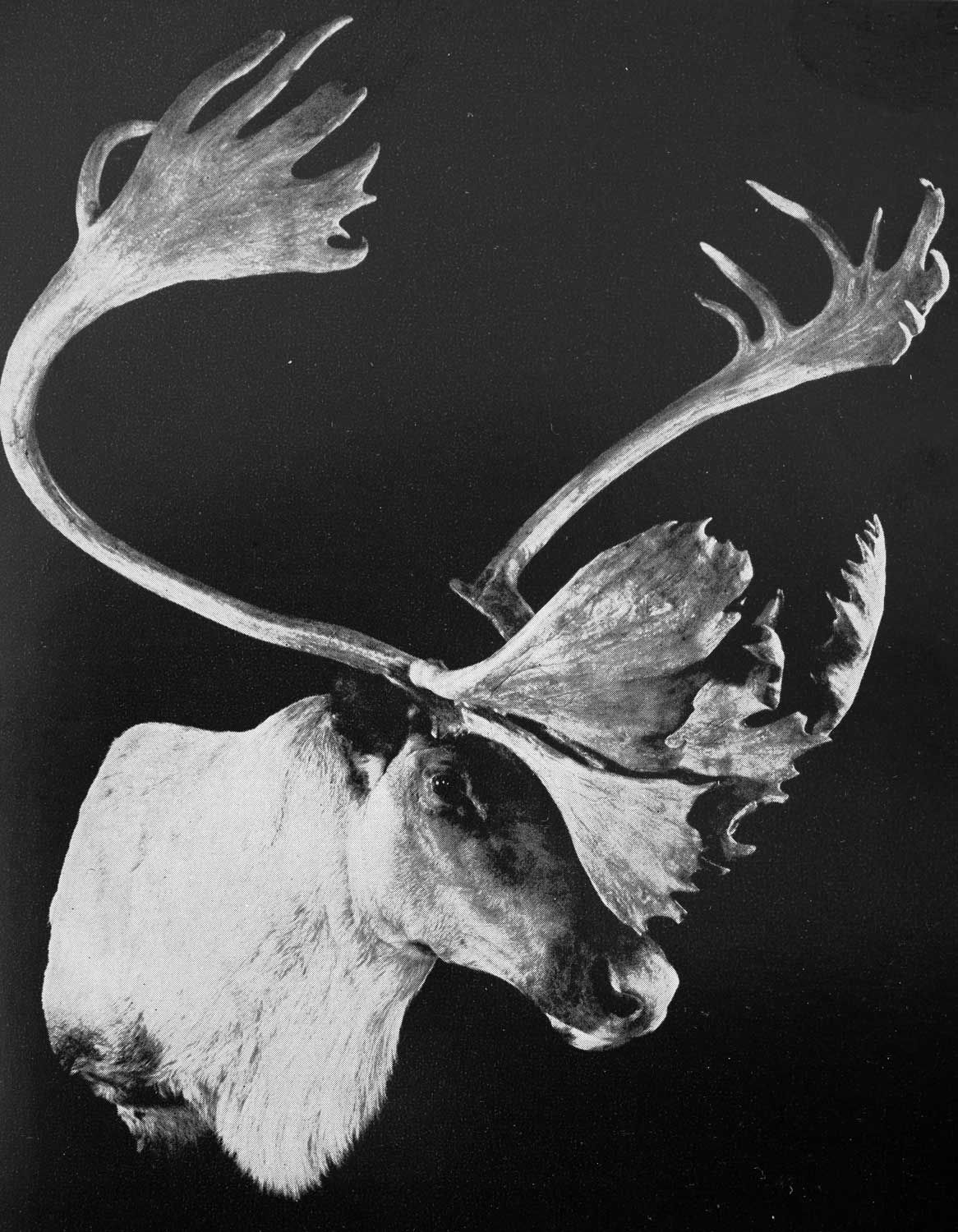
Inuit hunter Zack Elbow shot this caribou for meat and left its antlers, salvaged a year later. They score higher than any other Quebec-Labrador bull on record.
In 1951, Peck presented his find to the Boone and Crockett Club’s National Collection of Heads and Horns, crediting Zack Elbow with the kill. Taping 474 6/8 inches, it was then the highest-scoring set of caribou antlers on record. While in 1999 an Alaskan barren ground bull would edge it by a couple of inches, the rack on Elbow’s “meat animal” remains the biggest from any Quebec-Labrador caribou ever taken—by a stunning 10 inches!
Scoring the horns, antlers and skulls of big game animals is quite recent, though selective hunting dates back centuries in Europe. Skulls and antlers of roe deer and red deer festoon banquet halls of castles predating the percussion cap. James Rowland Ward started keeping records in his work as a taxidermist in London. His father, Edwin Henry Ward, had also worked in that trade. He had traveled with and prepared skins for John James Audubon. Another of his sons, Edwin, started a publishing house in 1872. By 1892 Rowland had tapped into his brother’s business to publish a book entitled Records of Big Game, with the distribution, characteristics, dimensions, weights, and horn & tusk measurements of the different species.
It was reprinted, with tweaks, two years later. A second, much larger edition, followed in 1896.
Published at “The Jungle,” 166 Picadilly W. in London, Rowland Ward’s Records of Big Game, as it has since been called, was dedicated “to the sportsmen of the world, without whose enterprise these records could not have been compiled.”
Early measurements, “on the outside of the longest horn from base to tip,” were rudimentary but useful for horns. They fell shy of describing antlers and got little help from text to follow: “… with deer from the bottom edge of the burr or coronet to the highest tip-point…. Circumference is at the base; with deer above brow-tine; in the red deer and wapiti group between bez and trez tines.”
Meanwhile, in New York in 1887, Theodore Roosevelt and his hunting companions had formed the Boone and Crockett Club to promote hunting, conserve wildlife and support policies to those ends. A book like Rowland Ward’s, however, didn’t appear until B&C member Prentiss Gray published Records of North American Big Game in 1932. Its methods of measuring and ranking animals, more complex than Ward’s, were modified in 1950 to establish the scoring system in current use.
Even after records books entertained hunters seeking exceptional game—and spurred them in that effort—“big” had many faces. In the Northeast and my early home in the Upper Midwest, a buck’s body weight was a common measure for comparisons with other deer. Nationwide, most hunters shot for meat well into the 20th century. Sighting two elk of the same body size, a hunter might shoot the bull with the biggest antlers and tack these on his barn. But many were left in the field. The rack of the biggest elk of a century might have been.
Slovenian immigrant and itinerant coal miner John Plute was also something of a mountain man. He lived in a boarding house in Crested Butte, Colorado, and drew from dwindling game herds to supply venison to the town’s Elk Saloon. In Dark Canyon of Colorado’s Anthracite Creek in 1899, he came upon an elk with extraordinary antlers and killed it with his ’95 Winchester in 30-40 Krag. (At least, that’s the rifle in the only photo I’ve seen showing him with a rifle.) But the meat was apparently load enough for his packsaddles. Plute returned to Crested Butte with only his impressions of the rack. As the story goes, his audience didn’t believe him, so he rode back and fetched the evidence. With no room in his lodging for the antlers, and no further use for them, he tendered them to saloon owner John Rozich to settle a bar bill. After Rozich passed, stepson Ed Rozman inherited the rack. In 1955 he measured it, then mailed his figures to the Boone and Crockett Club. Six years later, B&C’s score of more than 442 inches was published as the highest total ever for a Rocky Mountain (American) elk. Alas, John Plute never got that news. He had died in 1922, two days after falling from his horse on his way home from a party at a local ranch.
Plute’s bull topped the charts until antlers bought in 1995 by Alan Ellsworth edged it by 1/4 inch. B&C registered that bull, killed in Arizona’s White Mountains in 1968, as a new record in its 1999 book.
There’s no way to gauge the attention U.S. hunters paid to antlers before 1932, because there was no scoring system to compare them. But some sportsmen took note of exceptional racks. In the mid- 1890s Sir Edgar Dewdney, lieutenant governor of British Columbia, came into a set of tall, thick-beamed, non-typical mule deer antlers, from a buck reportedly arrowed by a native in the Okanogan Valley. Intrigued by its size and conformation, he sent the rack off for display at the 1910 International Hunting Exposition in Vienna. Dewdney’s family sold it in 1993. Two years later, the Boone and Crockett Club X-rayed the cracked skull, concluded it was sound and arrived at an antler score of just over 339. It holds second place on B&C’s mule deer roster, a line below another non-typical buck from Canada.
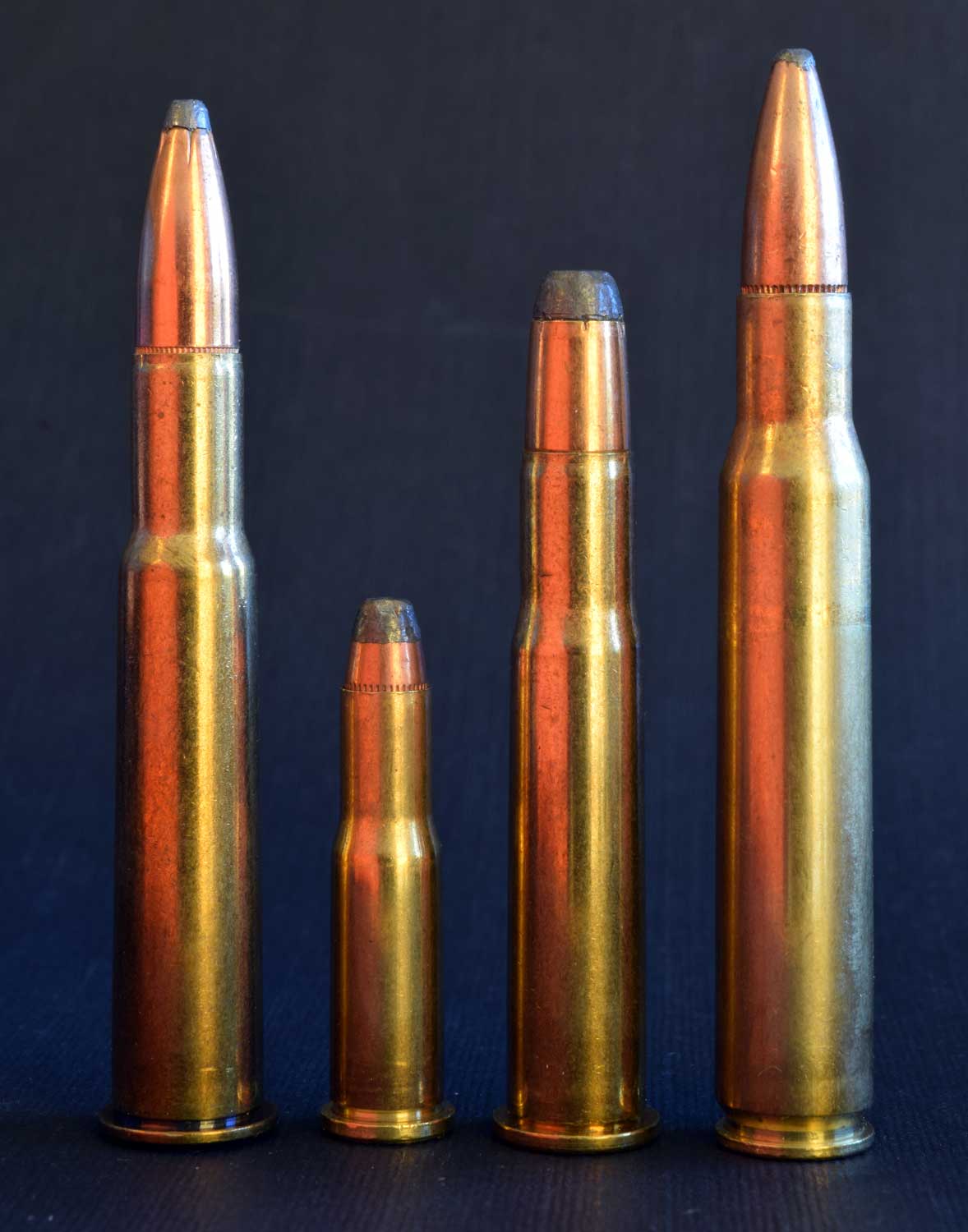
Powerful enough: from left, the 30-40 Krag (Plute’s elk), 25-20 (Jordan’s whitetail) and 32 Special (Broder’s mule deer). Far right, for comparison: the 30-06.
Winchester’s 32 Special cartridge drew no confetti showers at its 1902 debut. It performed like the 30-30, announced seven years earlier. The .32 bore had blackpowder roots, however, and rumor had it that the Special in barrels with 1:16-inch twist better served hunters still handloading “black” than did the 30-30 with 1:12-inch rifling.
Surely that drivel was far from Edwin Broder’s mind when he took up his lever-action 32 Special for a deer hunt with two friends on November 25, 1926. Their trip started early that day, the trio herding a 1914 Model T from Edmonton toward a cabin near Chip Lake, Alberta. When conditions challenged the Ford, they stopped in a saw-camp, hired a team of horses and a sleigh, then finished the 100-mile odyssey in a foot of snow. Despite the late-afternoon arrival, Broder grabbed his rifle and hied off into the woods to make the most of remaining daylight. Big mule deer tracks led him to a bed, just vacated. Farther on, in a jack pine swamp, he came upon the equally fresh trail of two moose. Broder considered his options. The moose would yield more meat; but they’d almost surely take longer to reel in. So he stuck to the original trail. There was barely enough glow from the evening sky for good aim with metallic sights when he saw the buck. It stood in a clearing, facing away. Quietly thumbing the hammer, Broder waited until the deer lifted its head. A full view of the antlers must have given him further pause. But he focused on the sights and, at the rifle’s snow-dulled snap, the deer fell. Its 355-inch non-typical rack is still the highest-scoring from any mule deer, ever.
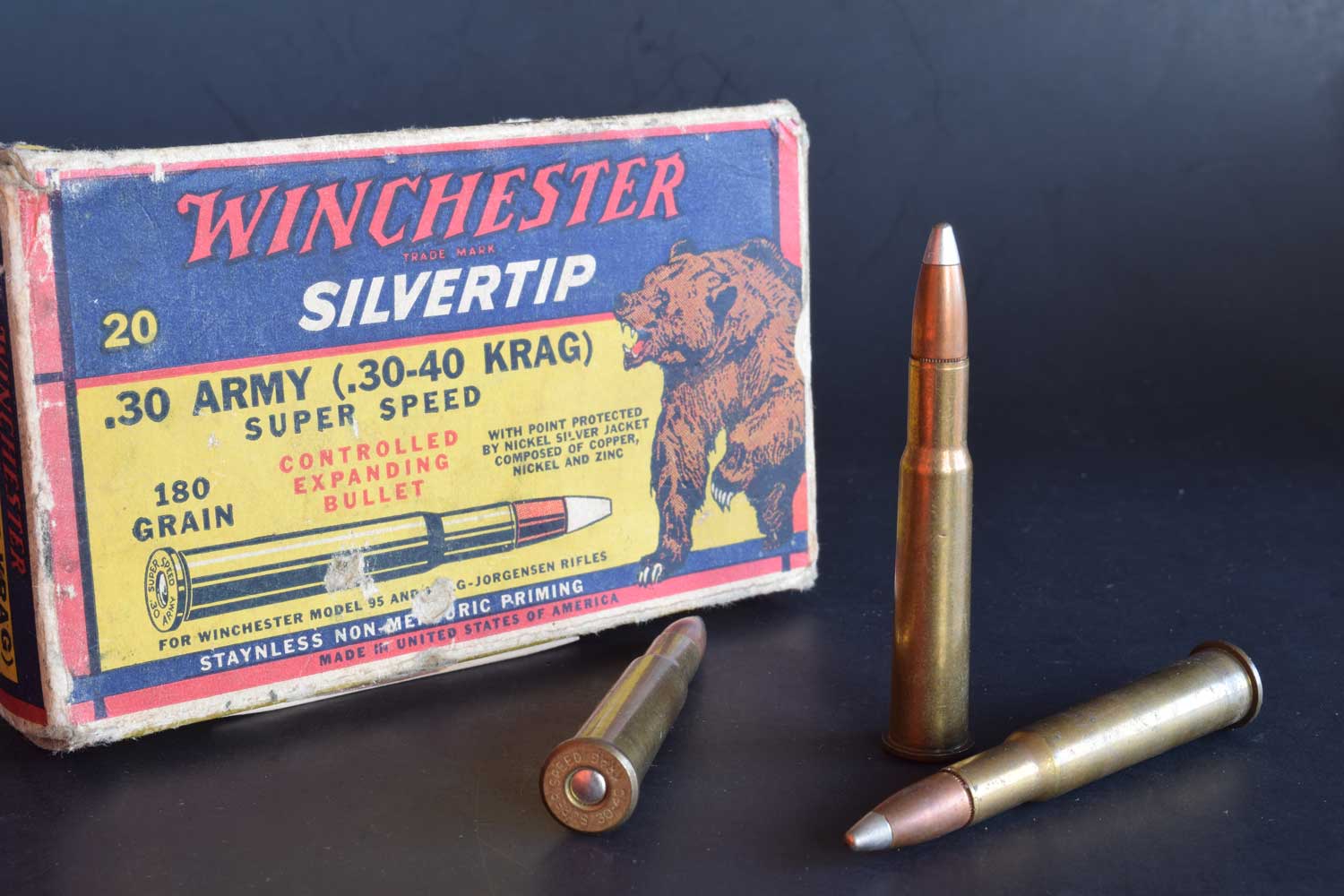
In 1892, the Krag-Jorgensen bolt-action chambered the 30-40 Krag, our country’s first smokeless rifle cartridge. It was also the U.S. Army’s first bottleneck cartridge.
After 90 years of records, and countless deer claimed by hunters—and by people who, like Edgar Dewdney, stumbled upon outsize antlers—differences in the rankings commonly come down to 1/8 inch. Many B&C entries appear as ties. So it’s remarkable that Broder’s rack out-scores Dewdney’s, in second spot, by 11 inches. And that rack has 9 inches on number 3, a Utah buck shot by Alton Hunsaker in 1943!
The biggest whitetail antlers also have eluded hunters obsessed with killing a chart-topping buck. On November 15, 1981, David Beckman shot a deer and had it checked at roadside by Michael Helland of Missouri’s Department of Conservation. Not long thereafter, as Beckman drove away, he saw a many-tined buck dead just inside a fence. He contacted Helland with directions to the private property, and the agent followed up with a visit to the landowner. Permitted access, Helland recovered the big animal and skinned it. No cause of death was apparent. By its teeth, it was 5 1/2 years old—though its rack, with skull cap, weighed 11 pounds! In January, official B&C measurement of the non-typical antlers yielded a score of nearly 334, well above that of an Ohio buck, whose 328-inch rack had been declared the world’s record in 1940. Astonishingly, that too was a “pick-up,” not a tagged deer.
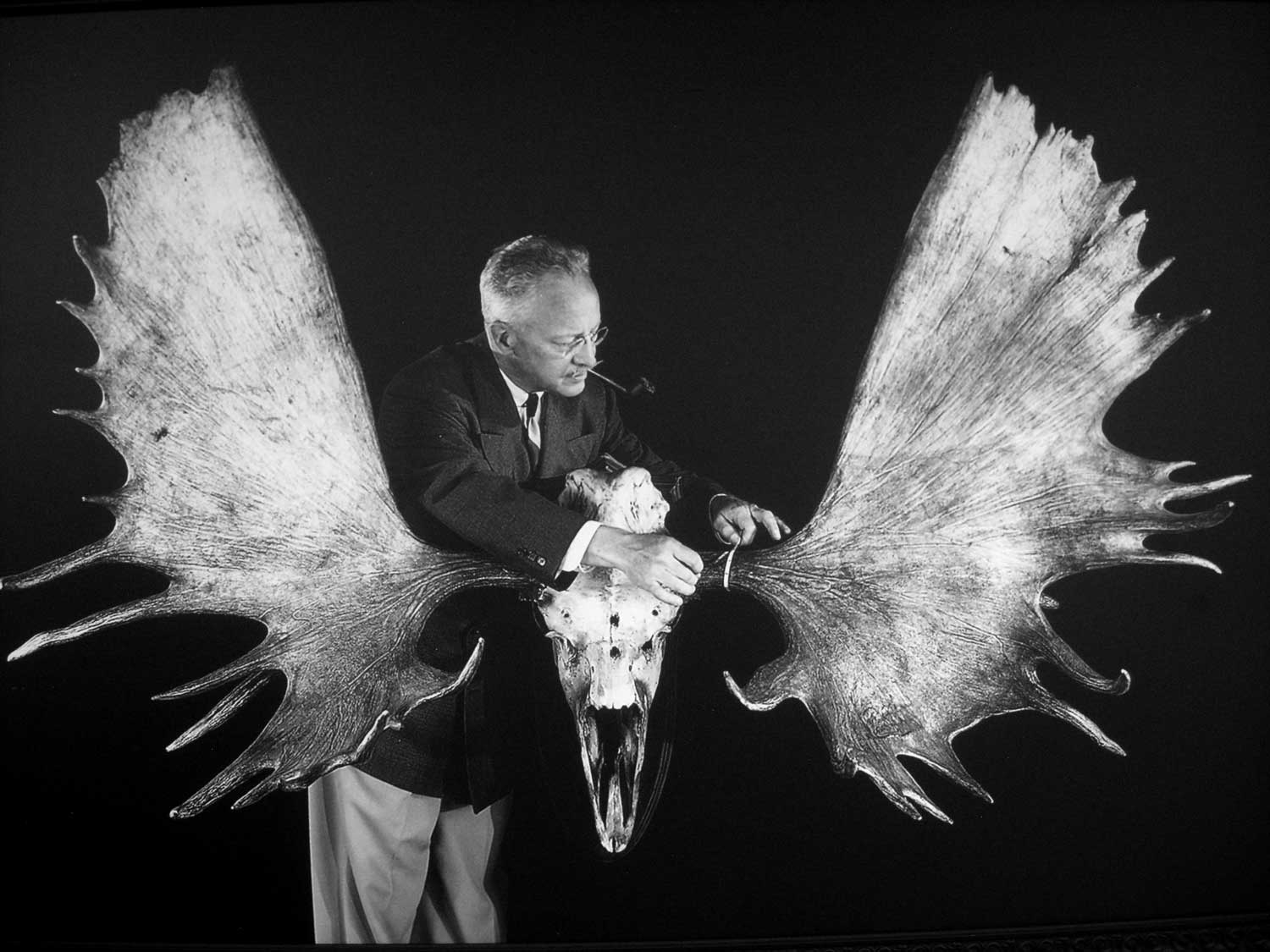
Established with the first B&C records book in 1932, the Club’s scoring system was updated in 1950. Here, Grancel Fitz tapes a very fine Alaska-Yukon moose.
A glance at current B&C records shows how exceptional these antlers are. The top-ranked non-typical whitetail claimed by a hunter, taken in Iowa in 2003, scores just shy of 308—20 inches below the found Ohio rack. Only two other whitetails have tallied above 300 antler inches. Another step down, and the field becomes crowded (relatively!), with five bucks within an inch of 295….
But if the tale of a hunt and its aftermath figured into antler score, the top spot in B&C whitetail records would surely remain with a Wisconsin buck killed over a century ago.
Late in 1914, alarming news of hostilities in Europe reached even rural Danbury. On November 20, however, James Jordan was bent on hunting deer. Dawn brought a metallic cold over thick new snow. James and his friend, Eachus Davis, set out early, walking the Soo Line rail across the bridge spanning the Yellow River. At 32, Davis was a decade older than Jordan, but he’d neglected to bring either his 50-cent deer license or a knife. When the hunters came upon a doe, Jordan shot her with one of the five rounds in his 25-20’s magazine. Because deer tracks near Round Lake had included a big set that showed “a lazy hoof,” Jordan loaned his knife to Davis to field-dress the doe, then kept hunting.
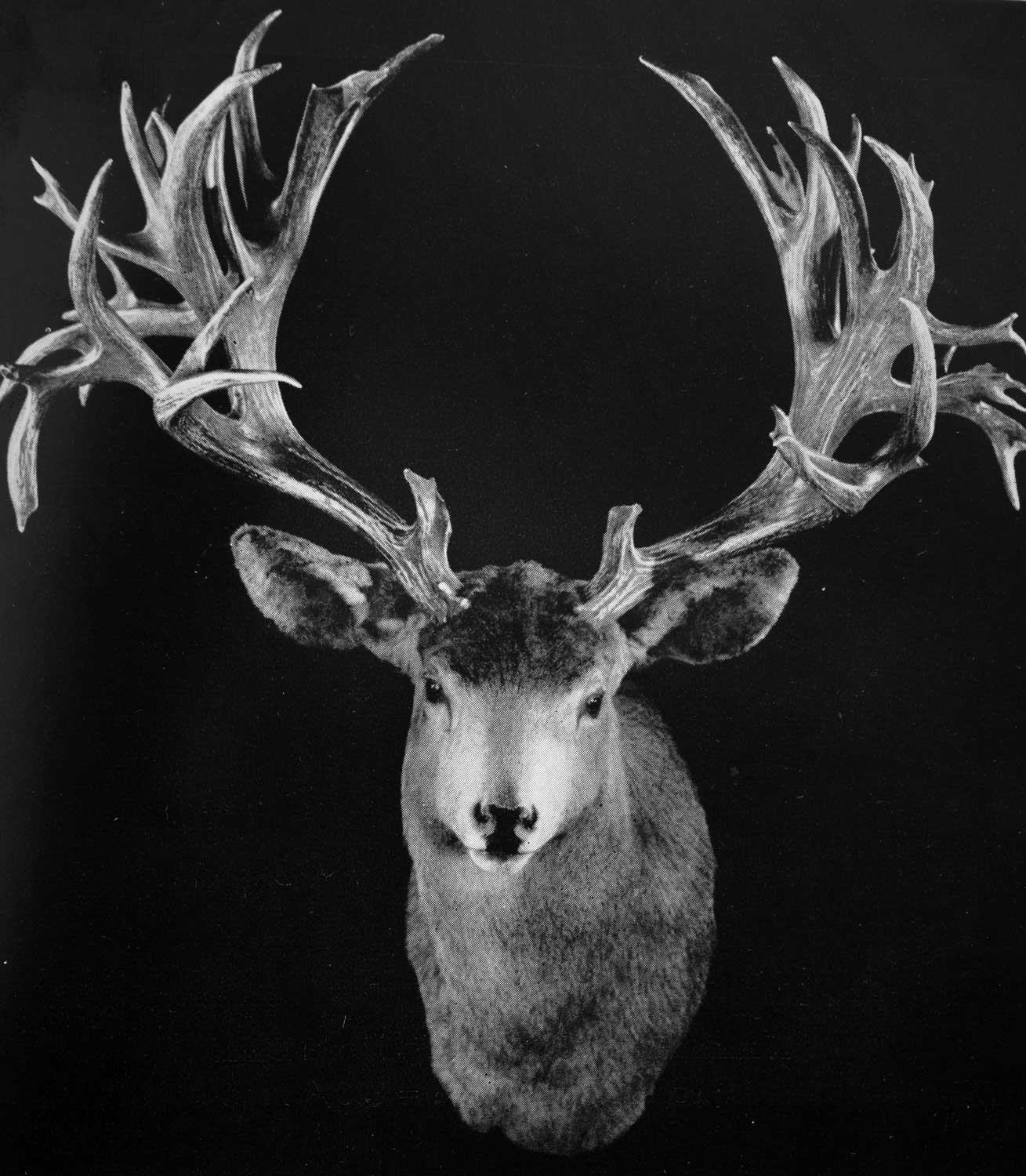
Edwin Broder shot this buck in 1926 after a short afternoon hunt in Alberta snow. It’s still the best non-typical mule deer on record. Broder almost decided to turn off the track and follow a couple of moose.
The buck’s trail took him north toward Danbury. Near the bridge, it led into tall grass and weeds beside the rail’s bed. Just then, a train approached from the south. At the locomotive’s whistle, a flurry of deer burst from the brush. Jordan fired three times at the enormous buck. He was sure at least one bullet struck, but the little 86-grain softnose had no visible effect. With one cartridge remaining, Jordan kept to the track. Presently he spotted the deer—across the river. With no ready option, he fired his last shot. The buck fell at water’s edge. Quickly the young man waded the icy, waist-deep water to retrieve the animal. But he couldn’t move it or, without his knife, make it lighter. So he trudged to town to fetch a wagon and enlist the help of Eachus and his two sons.
A moment of panic ensued at the river: Jordan couldn’t see the deer! The men found it hung up in brush 200 yards downstream and ferried it across. Back in Danbury, even veteran hunters were astounded by the buck’s size: “Sure ’nuff 400 pounds!” The thick, long-tined rack drew gasps. Among those in the crowd was taxidermist George Van Castle of Webster, 10 miles away. He priced a shoulder mount at $5. Jordan paid. Van Castle left with the cape and antlers.
But his wife was ailing. For better medical care, the Van Castles moved to Grindstone Lake, near Hinckley, Minnesota. Months later, when Jordan went to Webster to retrieve his deer, he found neither it nor the taxidermist.

Van Castle lost his wife, remarried and moved to Florida. His Grindstone Lake house lay vacant for the next four decades, selling for taxes in 1959. That year Minnesota DNR forester Bob Ludwig found a crude mount of a deer with huge antlers in a second-hand store. He bought it for $2. Later he measured the rack and sent his tally to B&C scorer Bob Fashingbauer in St. Paul. Suspecting Ludwig’s figures were bogus, Fashingbauer visited, tape in hand. His score differed by half an inch. At 206 inches, this whitetail was a world record!
By then, James Jordan and his wife had moved to Minnesota. When news spread of the discovery of a giant buck, they invited Ludwig—oddly, related to them by marriage—to show the antlers at the bar they operated near St. Croix. There, Jordan immediately identified them as from the deer he had shot 35 years earlier. But Ludwig owned them now and would not relinquish them. While Jordan had supporters, his reputation as a tale-spinner left others with doubts. In 1965 B&C listed the new world’s record typical whitetail as taken by an unknown hunter near Sandstone, Minnesota.
Cash offers for the antlers followed. Ludwig sold them to a New Hampshire dentist for $1,500 in 1968. But Jordan’s insistence that he’d shot the deer kept the debate about its origins alive. In 1977 Ron Schara, Star Tribune writer from the Twin Cities, visited Jordan, then 85 and losing his memory. But his wife Lena’s was still keen. Fashingbauer also conducted interviews. In December 1978, B&C concluded the weight of evidence favored Jordan’s claim and changed the listing to credit him as the hunter. Ironically, James Jordan died two months before that change.
Bass Pro Shops bought the Jordan antlers in 2001 for an undisclosed sum.
It’s true that the highest-scoring typical whitetail in current records was killed by a hunter who, with his neighbors, focused on that animal for its antlers. As Saskatchewan’s 1992 deer season came to a close, a school bus driver on a route outside the town of Biggar spotted the buck in an alfalfa field. Local farmers kept watch for it and later spotted it on other ag land. One of them was Milo Hanson.
In 1993 the November 15 opener came on a Monday. Milo and his group, who commonly hunted by “pushing the bush” in small drives, had no luck the first days. Later that week, as new snow improved conditions, a big buck burst from a slough in front of Hanson and a friend. “Don’t shoot, Walter!” yelled Milo. “That’s not him!” It was, he would concede, a bigger whitetail than he had ever shot. “But it wasn’t the one we were looking for.”
Saskatchewan did not allow Sunday hunting, and Milo tended to chores the day after. On the 23rd he and a small party of hunters spotted their quarry half a mile away on his property. It entered a thicket of willows and poplars. The group organized a push. Hanson and another hunter missed the great deer as it dashed off through the trees. Another drive in adjacent woods failed to turn it up. The hunters knew the country well, so lost no time setting up the morning’s last drive. It popped the great buck free near Milo, and sped off, straight-away. At the blast of Hanson’s Model 88 Winchester, it tumbled. But as he ran up, the deer scambled to its feet and made off into cover. Sprinting to a rise for a better view, Milo spotted the animal in time to send a final .308 bullet.
The buck’s 213-inch typical rack drew a lot of attention—and set a new world record for typical whitetail deer by a whopping 7 inches.
Big antlers that would once have been left in the field now fetch high prices in a market fueled by competition between hunters for celebrity that can itself generate dollars. Milo Hanson said after the rack was declared bigger than the Jordan buck’s, “some people tried to take advantage, [offering] $25,000 for it. But I wasn’t going to sell it.” Then: “Why would they want it anyway? They didn’t shoot it.”
But hunting had become more than recreation, a tradition or a freezer-filling effort. Over the next decade, replica racks and appearances at various shows would bring Hanson “over $60,000 a year”
As Milo’s hunting party gathered about the dead whitetail that day in ’93, “there were some quiet moments.” The it-could-have-been-me pause. “It was sort of sad,” Hanson mused. The men, he said, are still all pals. Still, outsize antlers amplify envy, as they can the strange ache of a licensed kill.
Whether that rack is an earned prize or unmerited bonus.
A Rifle for Big Bone
Legions of hunters dream of one day returning from the field with record-book antlers, knowing that’s little more likely than winning at Powerball. To that end, they look for ways to move Lady Luck’s thumb off the scales. A popular ploy: buy a costly rifle that hurls bullets on arcs as flat as the curve of the earth and top it with the most complicated scope puffed on YouTube. But record-book game has fallen to all manner of hardware.

After some study, I lean to rifles from the 1890s in 30-40 Krag. A Navy Krag was my first step beyond .22s. Alas, despite a sight radius as long as a hay-fork handle and a shot distance of 30 charitable steps, I missed the Sunoco oil can. The steel butt sprung my young clavicle. My ears rang.
Winchester’s 1895 was no more endearing. Teddy Roosevelt’s endorsement aside, the ’95 strikes me as mean-spirited. Its low, sharp comb leaps from ambush to jab my jaw. The lever pinches my fingers. A heavy rifle, it points sluggishly. Its shuffling steel brings to mind machinery by International Harvester.

Options in 30-40 repeaters from the 1890s are limited. More’s the pity, as the cartridge has put a lot of big antlers on the wall. Slouchy in profile and so old it barely dodged an original loading with blackpowder, it’s slower off the blocks than celebrated magnums and PRCs. But on Hardscrabble Mountain the last week of the 1967 hunting season, Paul Muehlbauer rose early, loaded his 30-40 and climbed a frosty path. At ridge-top by dawn, he spied a deer with impressive antlers. His bullet staggered the buck. A short distance along the trail, Paul found it dead. Its antlers set a state record; and for five years both Colorado’s top-listed typical mule deer and elk had been taken with Winchester 1895s in 30-40 Krag! Muehlbauer’s still ranks number 8 in B&C’s North American records, Plute’s elk number 2.
Magnum schmagnum!
This article originally appeared in the 2024 November/December issue of Sporting Classics magazine.

